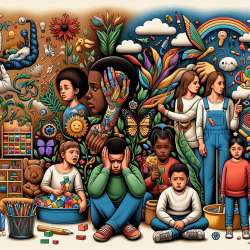Introduction
In the realm of disaster management, children are often viewed as vulnerable individuals needing protection. However, recent research indicates that children can be active participants in disaster risk reduction (DRR) activities, contributing significantly to community resilience. The study titled "Involving children in disaster risk reduction: the importance of participation" offers a comprehensive look into how children can be integrated into DRR efforts, highlighting the numerous benefits of their involvement.
Understanding the Research
The research provides a theoretical foundation for children's involvement in DRR activities. It reviews literature on child participation, their developmental capacity, and the potential benefits for both children and communities. The study emphasizes that children, when engaged appropriately, can contribute to disaster preparedness, response, recovery, and resilience.
Benefits of Child Participation
Participation in DRR activities offers several benefits:
- Personal Development: Children develop enhanced personal skills, self-efficacy, and interpersonal relationships.
- Community Benefits: Improved social connections and networks, leading to better disaster preparedness.
- Empowerment: Children gain a sense of empowerment, enhancing their resilience and ability to adapt to change.
Implementing the Research Findings
Practitioners can improve their skills by implementing the outcomes of this research. Here are some actionable steps:
- Encourage Participation: Create opportunities for children to participate in DRR activities. This can include drills, planning sessions, and educational programs.
- Developmentally Appropriate Activities: Ensure activities are suitable for children's developmental stages, providing the necessary support and guidance.
- Foster Adult-Child Collaboration: Adults should guide and support children, facilitating their involvement and ensuring their ideas are heard and valued.
Encouraging Further Research
While the current research provides valuable insights, further studies are needed to explore the barriers and challenges to children's participation in DRR activities. Practitioners are encouraged to engage in ongoing research to identify effective strategies and models for involving children in DRR efforts.
Conclusion
Children are not merely passive victims in the face of disasters. They are valuable resources that can be nurtured and mobilized for disaster preparedness and resilience. By involving children in DRR activities, we not only enhance their personal development but also strengthen community resilience. Practitioners are encouraged to implement the research findings and contribute to further studies to optimize children's participation in disaster risk reduction.
To read the original research paper, please follow this link: Involving children in disaster risk reduction: the importance of participation.










